
Kumano Kodo
We hiked the Kumano Kodo!
The Kumano Kodō is a series of ancient pilgrimage routes that crisscross the Kii Peninsula. These mountainous trails are used by pilgrims to the … Three Grand Shrines of Kumano: Kumano Hongū Taisha, Kumano Nachi Taisha and Kumano Hayatama Taisha… It has been visited by pilgrims seeking healing and salvation as a site of religious significance for over a thousand years. People with backgrounds from peasants to emperors would visit the region. Wikipedia
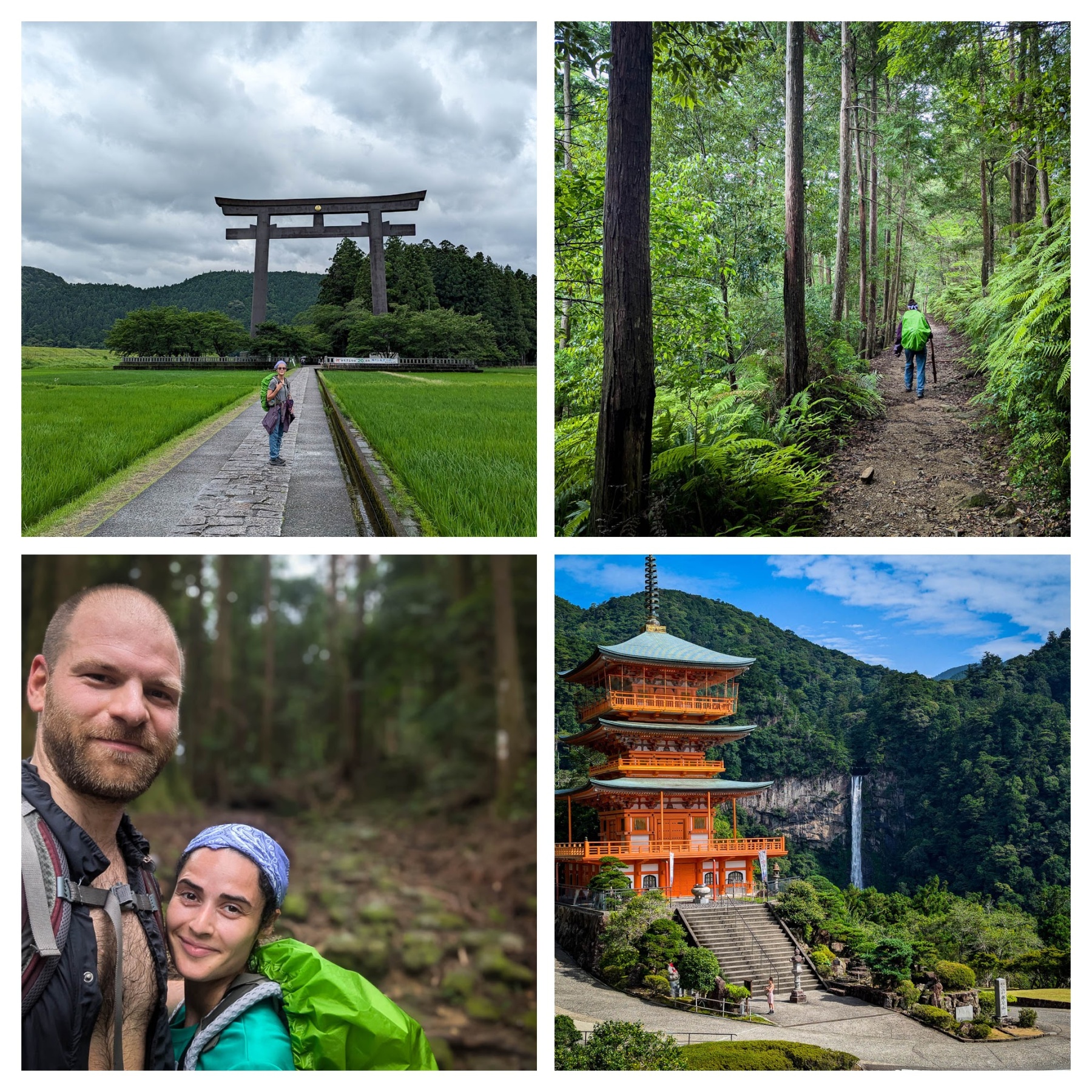
Stephanie and I had a wonderful three-day trip along the Nakahechi Route from Hongu to Nachisan, with nights in Yunomine Onsen, Koguchi, and Nachisan.
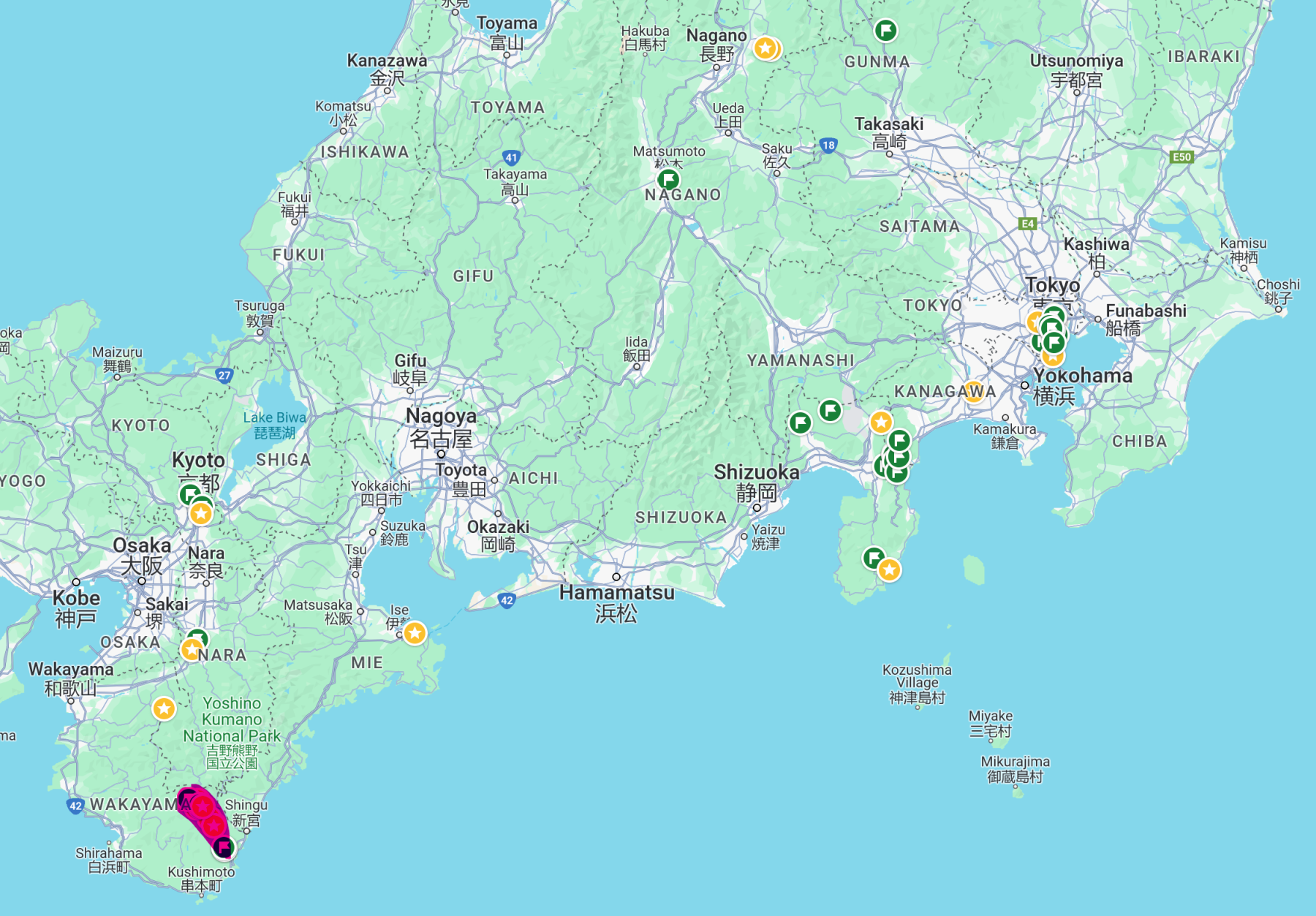
Kumano Hongu Taisha Otorii is the largest torii (traditional gate) in Japan:

Though the altitude is low, the mountains are steep, and the going is challenging. Add in the heat and humidity of June, and you get challenging days (though I realize the photo below does not show it :)
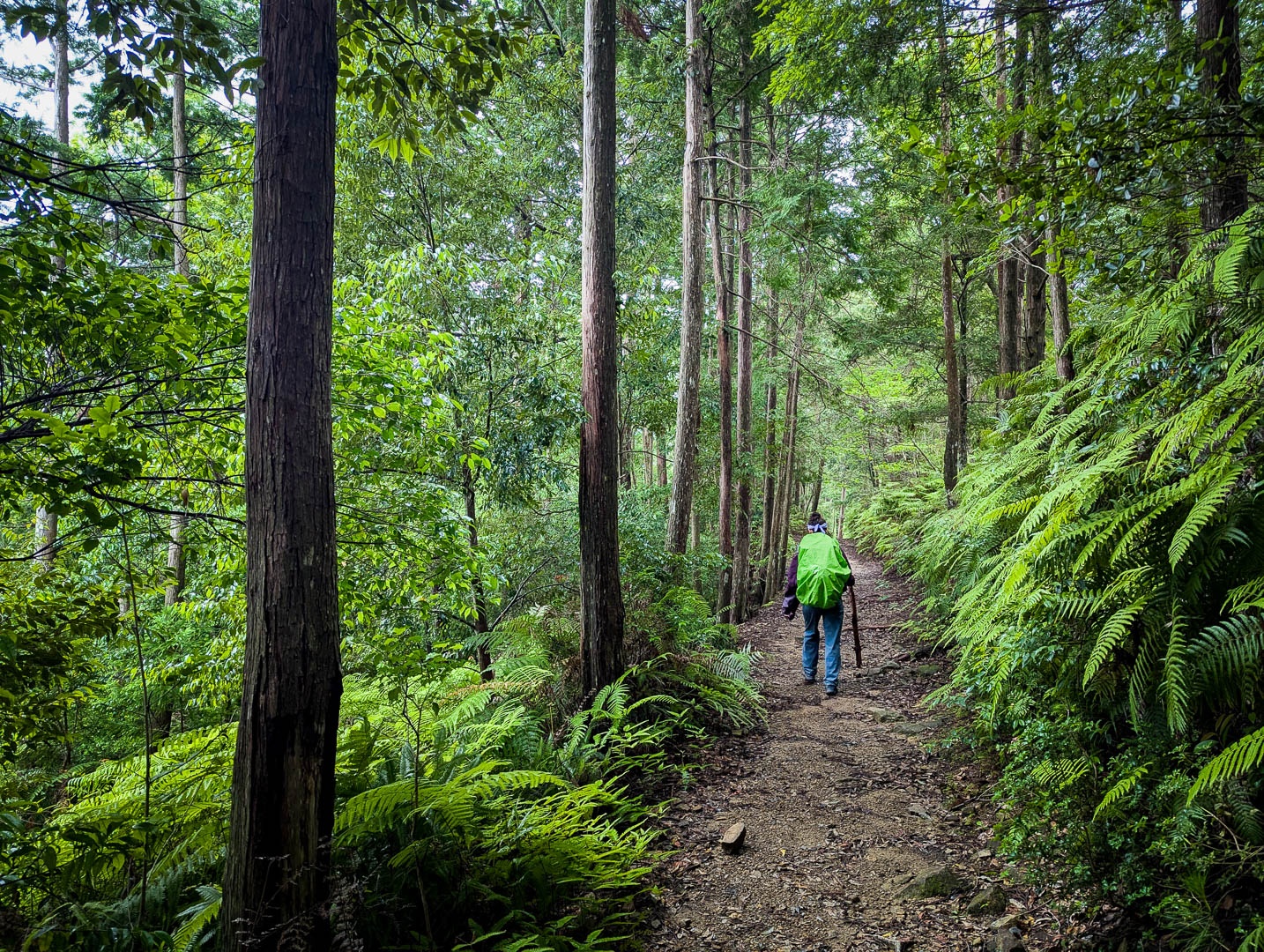
It’s lovely at the end of a long day to get to a ryokan, take off all your sweaty clothes, and get in a hot onsen. The one in Yunomine Onsen was particularly nice. The main onsen in town is UNESCO-listed, and it’s been visited by pilgrims for centuries. We instead used Ryokan Yoshinoya’s private outdoor onsen. It was lovely to sit outdoors in the hot waters of the onsen as a cool light drizzle fell.
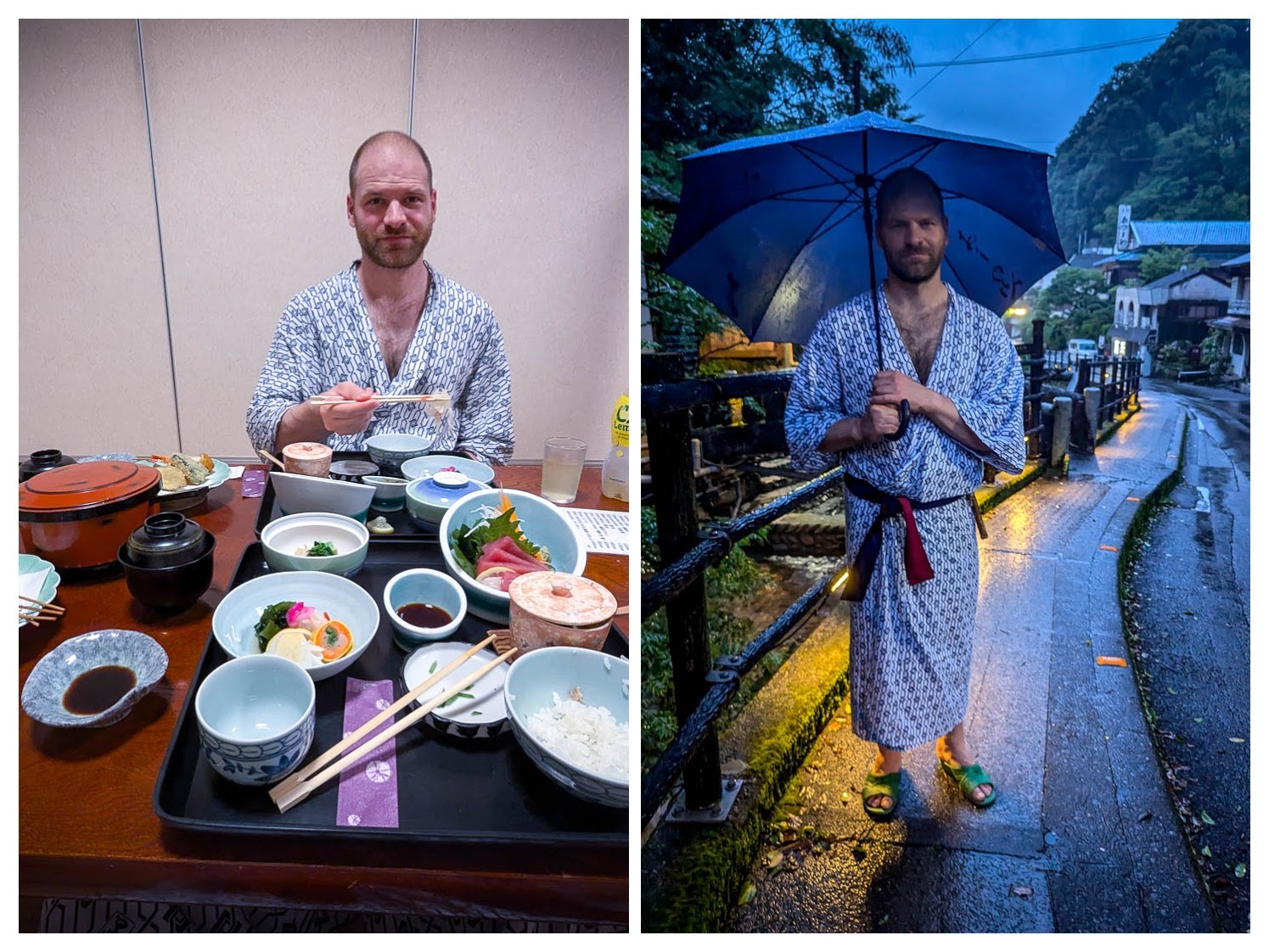
I like the custom of walking around onsen towns in yukata, which is like a casual version of the kimono or a lightweight bathrobe. At the end of a long day of hiking, hot and sweaty and dirty, you take all those clothes off, take a quick shower, hop in a hot onsen, put on the yukata and wear it for the rest of the day as you lazily amble from your room to dinner and about town.
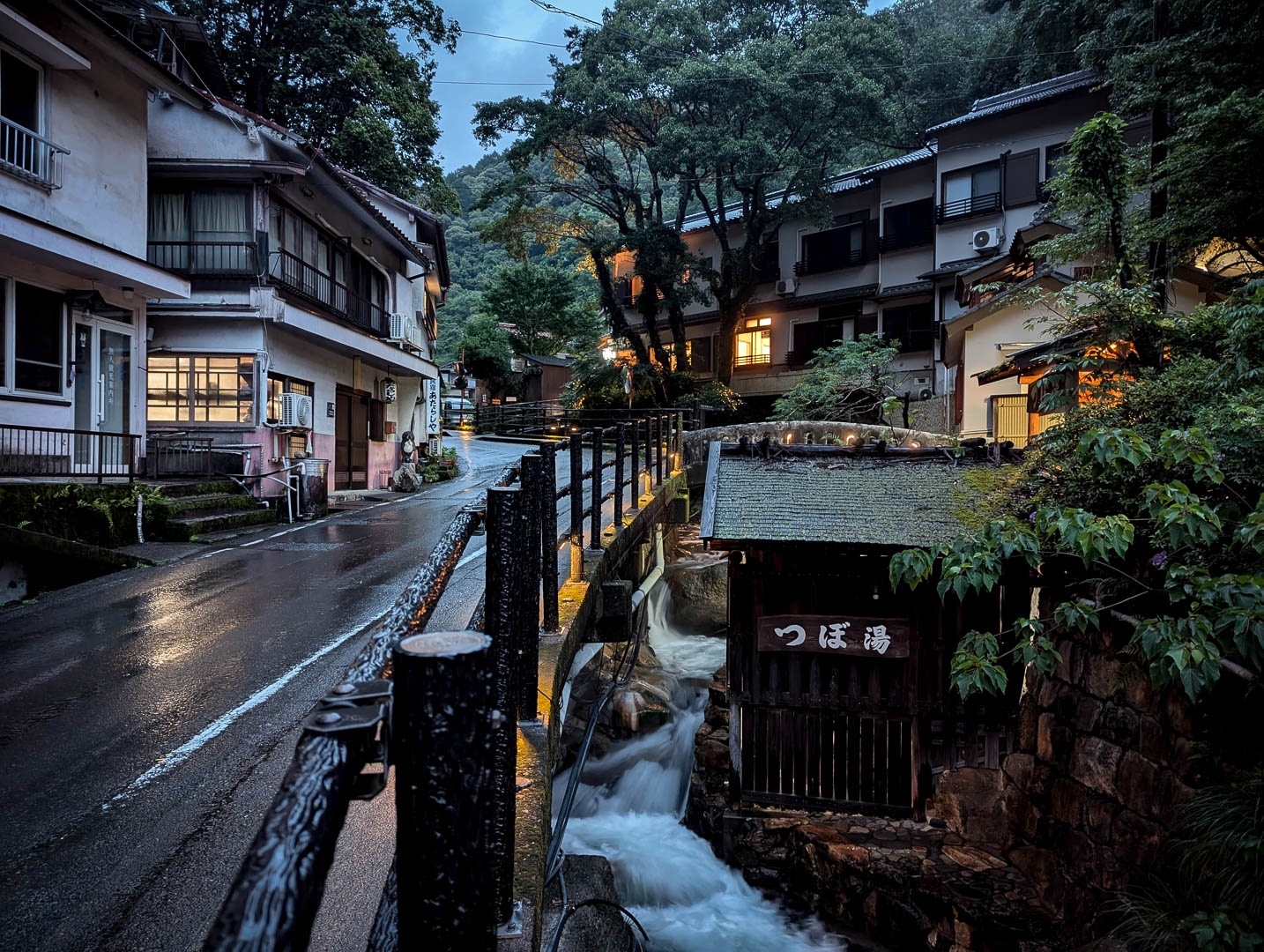
The small hut at the side of the stream is Tsuboyu bath, a UNESCO World Heritage site. Wikipedia says that “for over 1000 years, people have made pilgrimage to the onsen to participate in hot spring water purification rituals to prepare for visiting Kumano Hongu Taisha shrine to worship”.
The rooms in most, if not all, of the lodgings along the way do not even have a shower. Everyone is expected to shower in the shared shower immediately next to the onsen. This is an interesting experience for westerners: you sit on a tiny stool in a line of other tiny stools and shower and wash yourself. There are no dividers between the separate showers and there are other people doing the same thing immediately next to you.
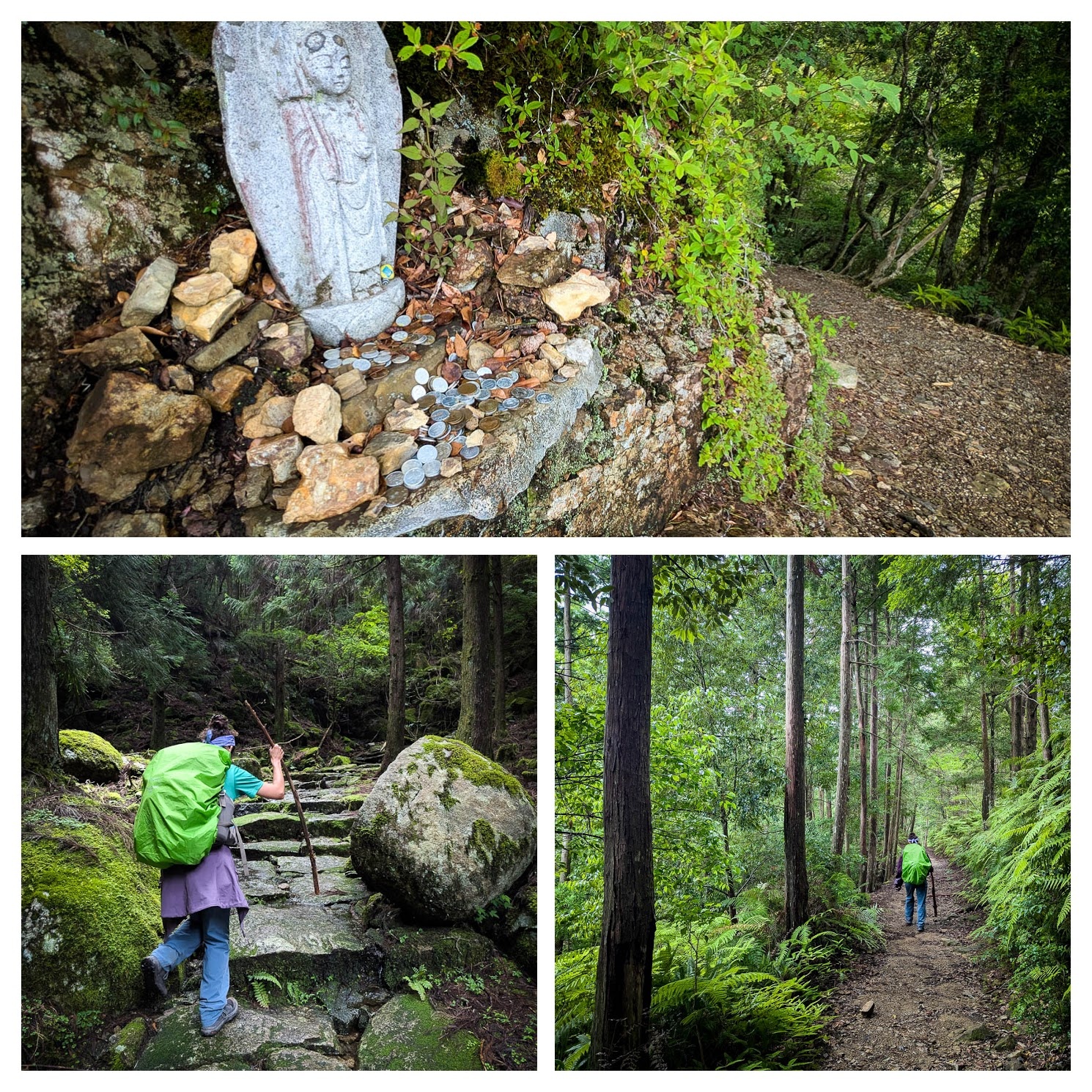
Most lodgings offer a lunch box to take with you on the days’ hike. The food is generally excellent, and always includes rice and raw fish. We ate raw fish for breakfast, lunch, and dinner every day of the hike. If you’re lucky, you get to enjoy it with a nice view:

If the weather does not work out so well, there are usually a few covered shelters along the way with a table and benches.
On our third day, we hiked from Koguchi to Nachisan. It was the rainy season, so the forests were lush green and the streams flowing, sometimes directly over the ancient stone steps. It’s a beautiful landscape and reminded me of the summers of my youth spent in the woods of Czechia.

This was the most challenging day of our trip, with 4,000 feet of elevation gain. In Nachi, a shinto temple, a buddhist temple, and Japan’s lagest waterfall awaited us.
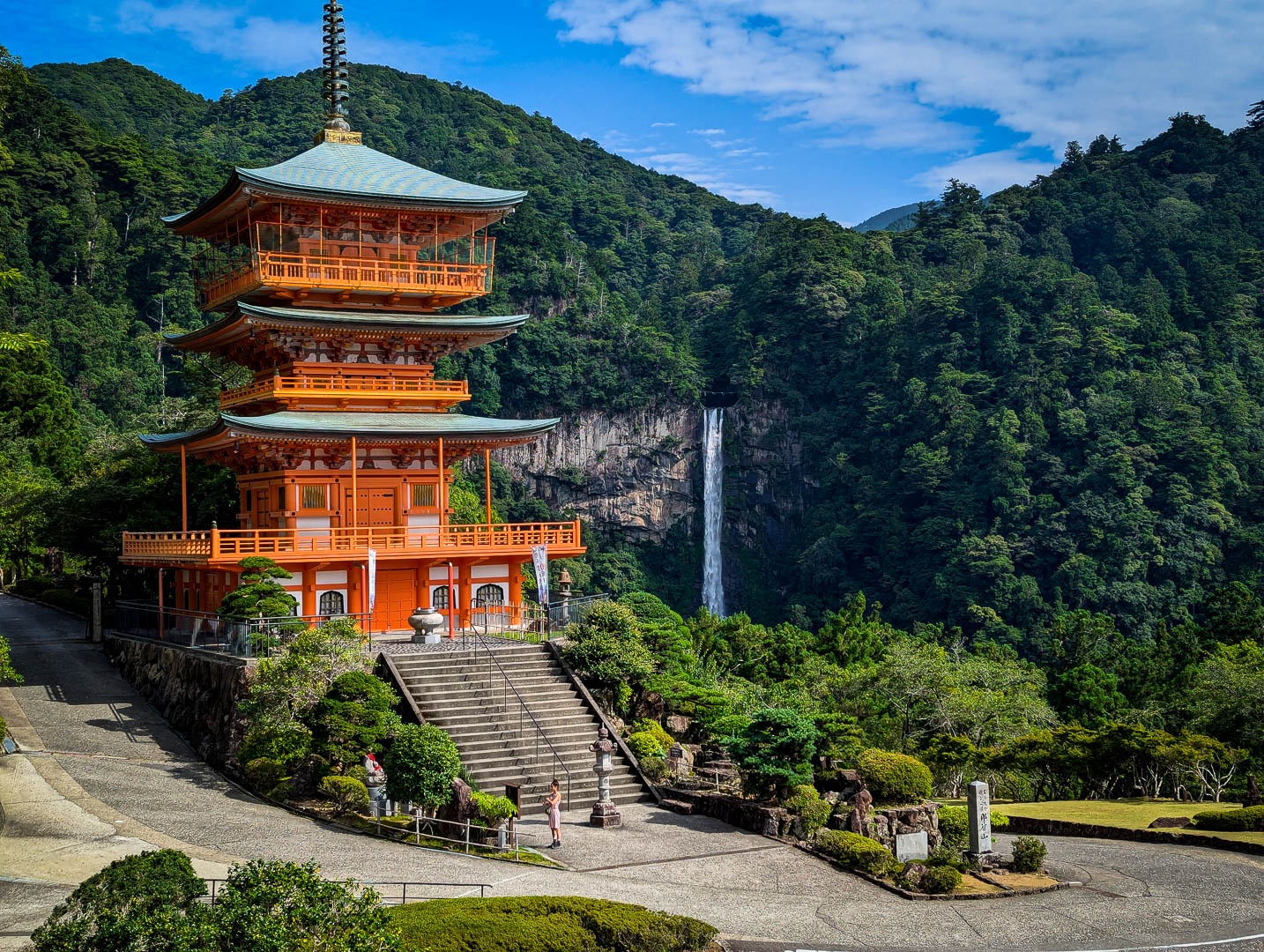
Here are some resources if you’d like to plan your own trip:
- Maps
- Community Reservation System - as far as I can tell this is the only way to reliably book accommodation or services along the route. The website is somewhat janky; it even shuts down during the Japanese night, say some fellow travelers from Quebec. So be patient.
Comments